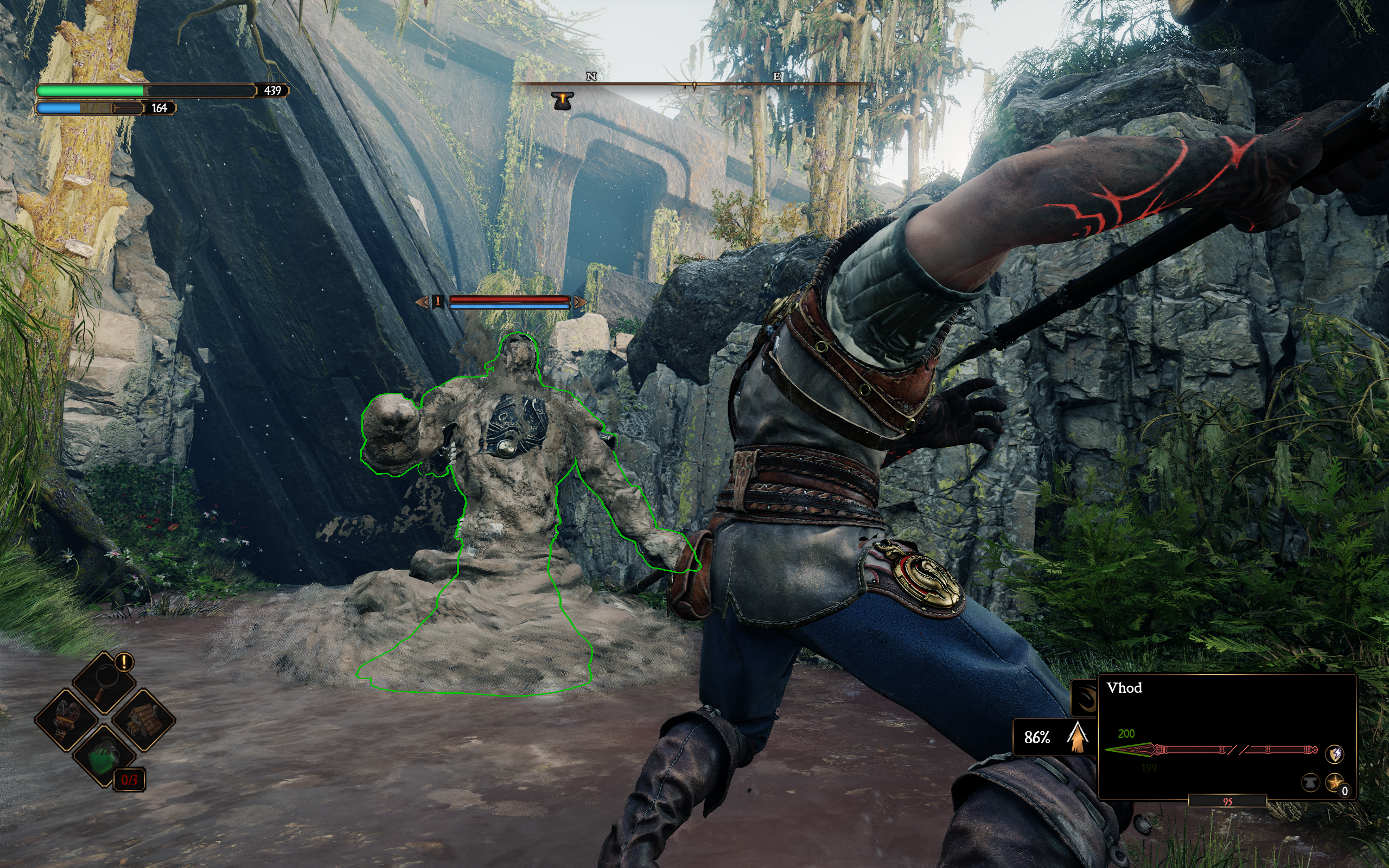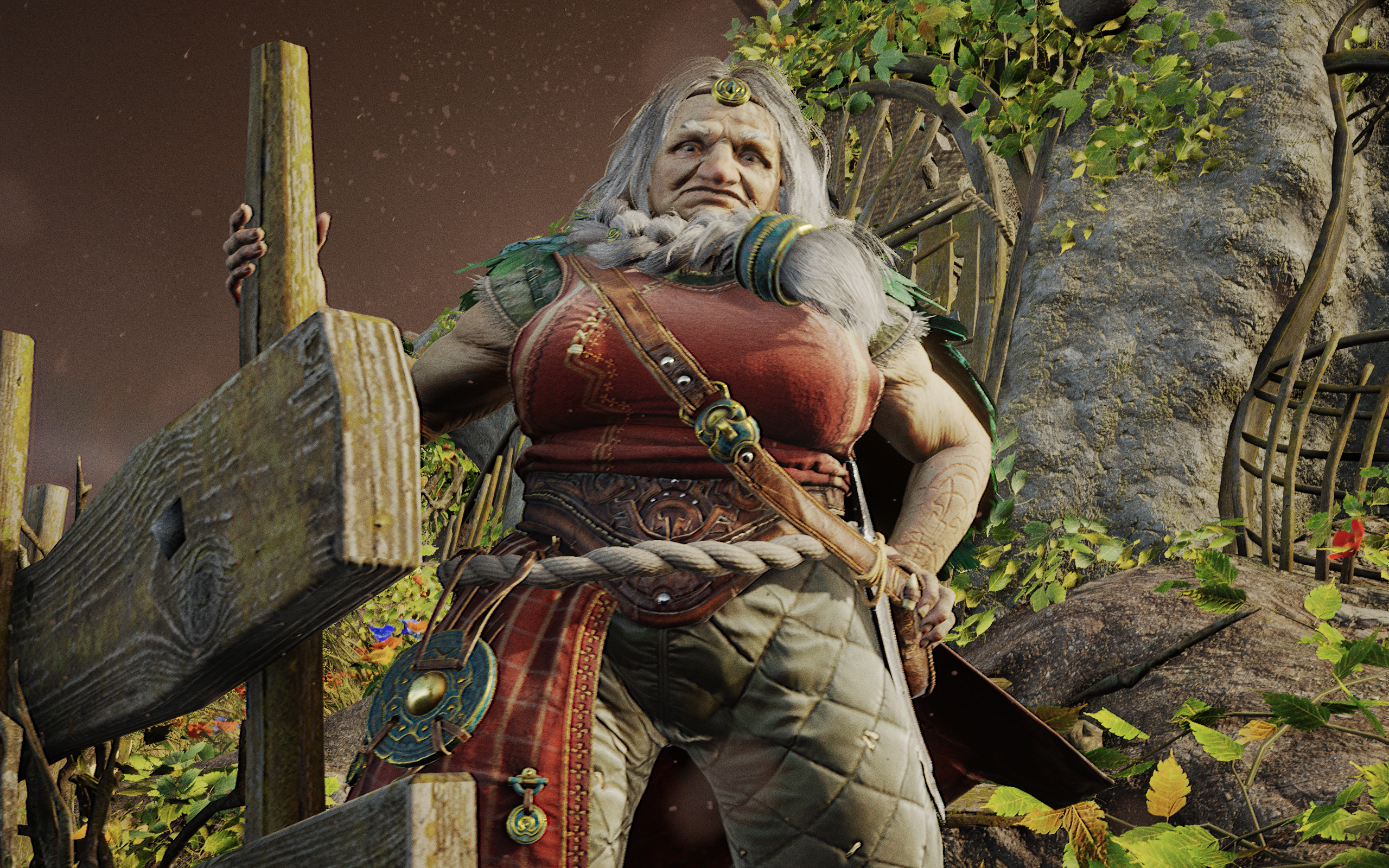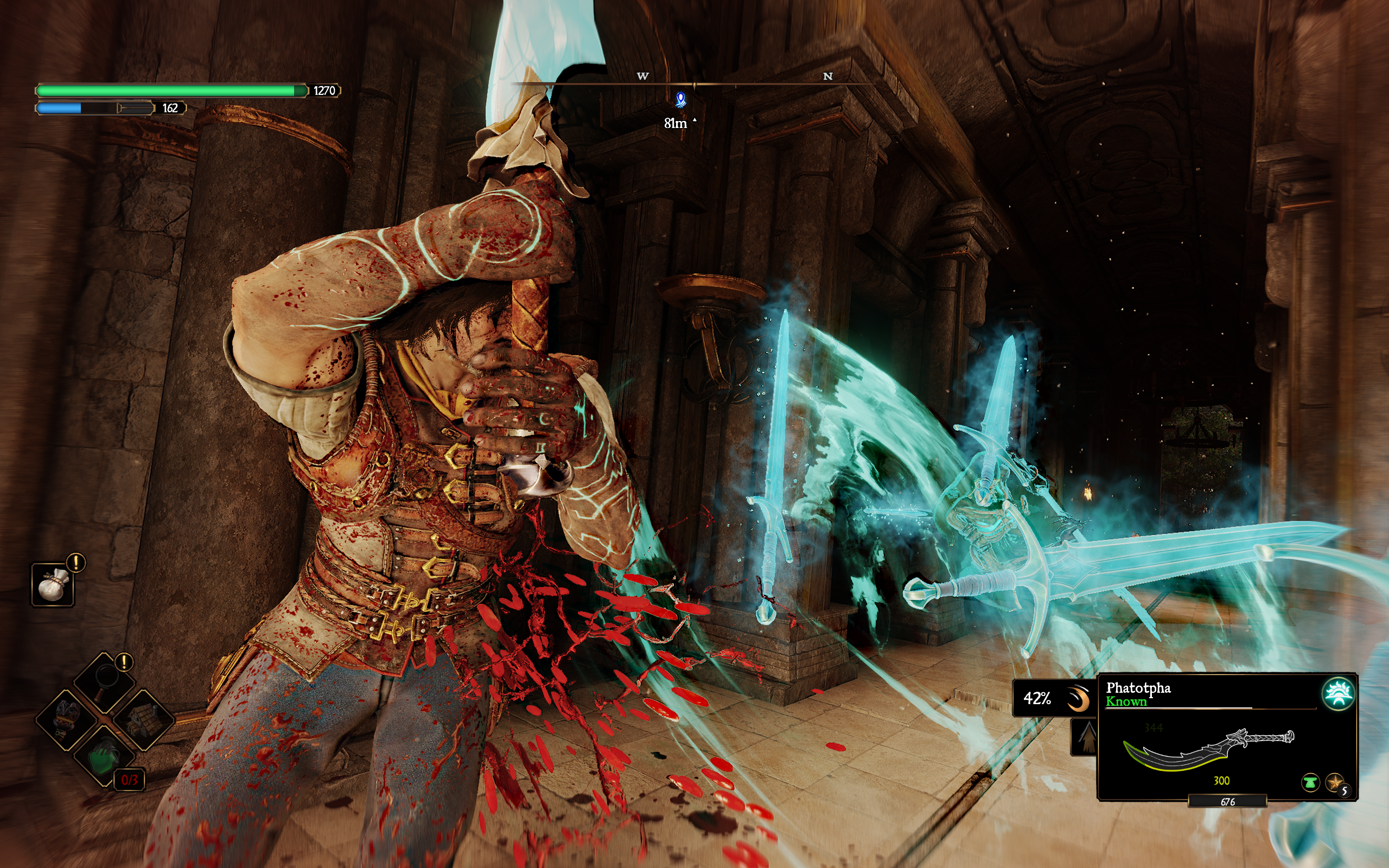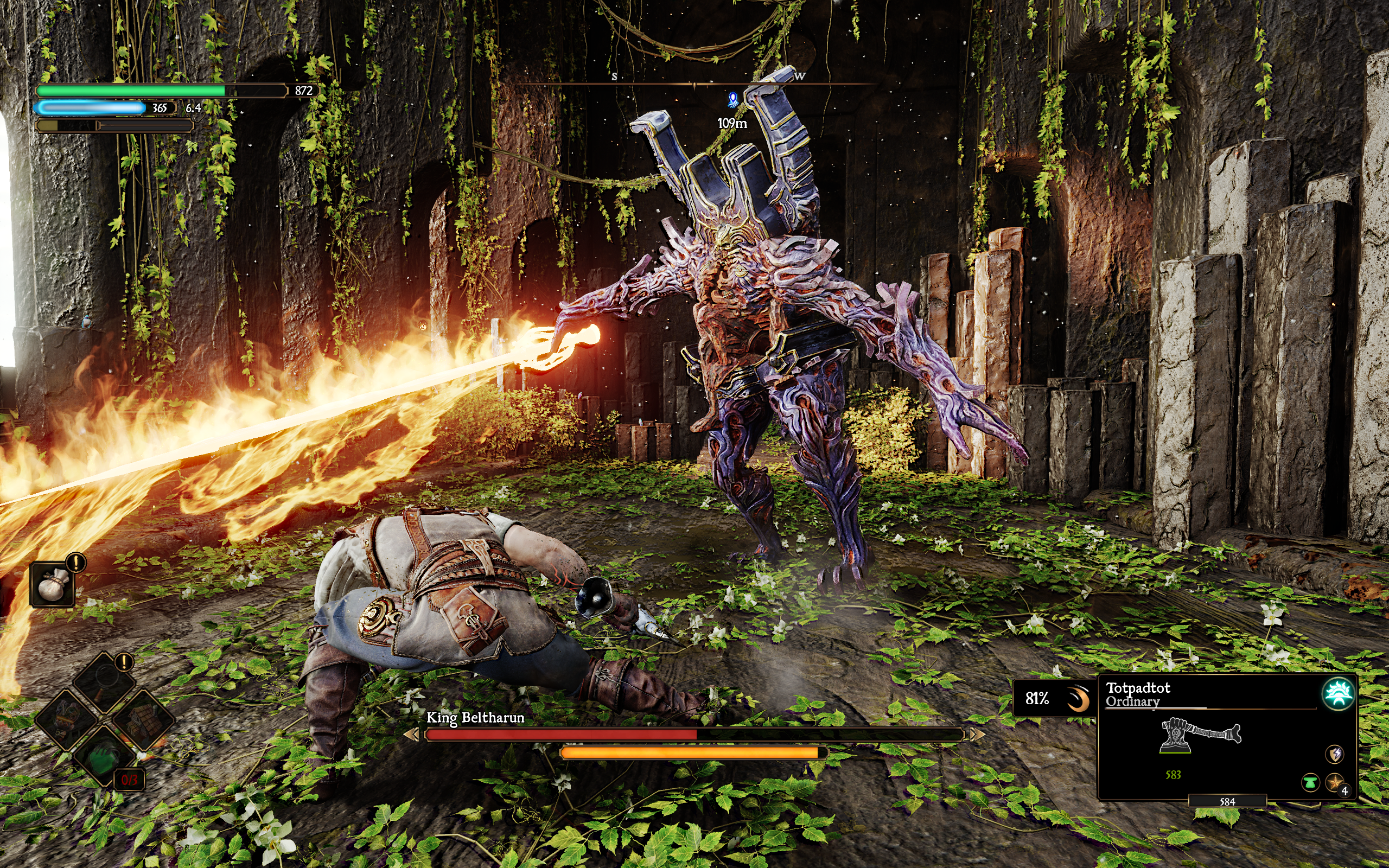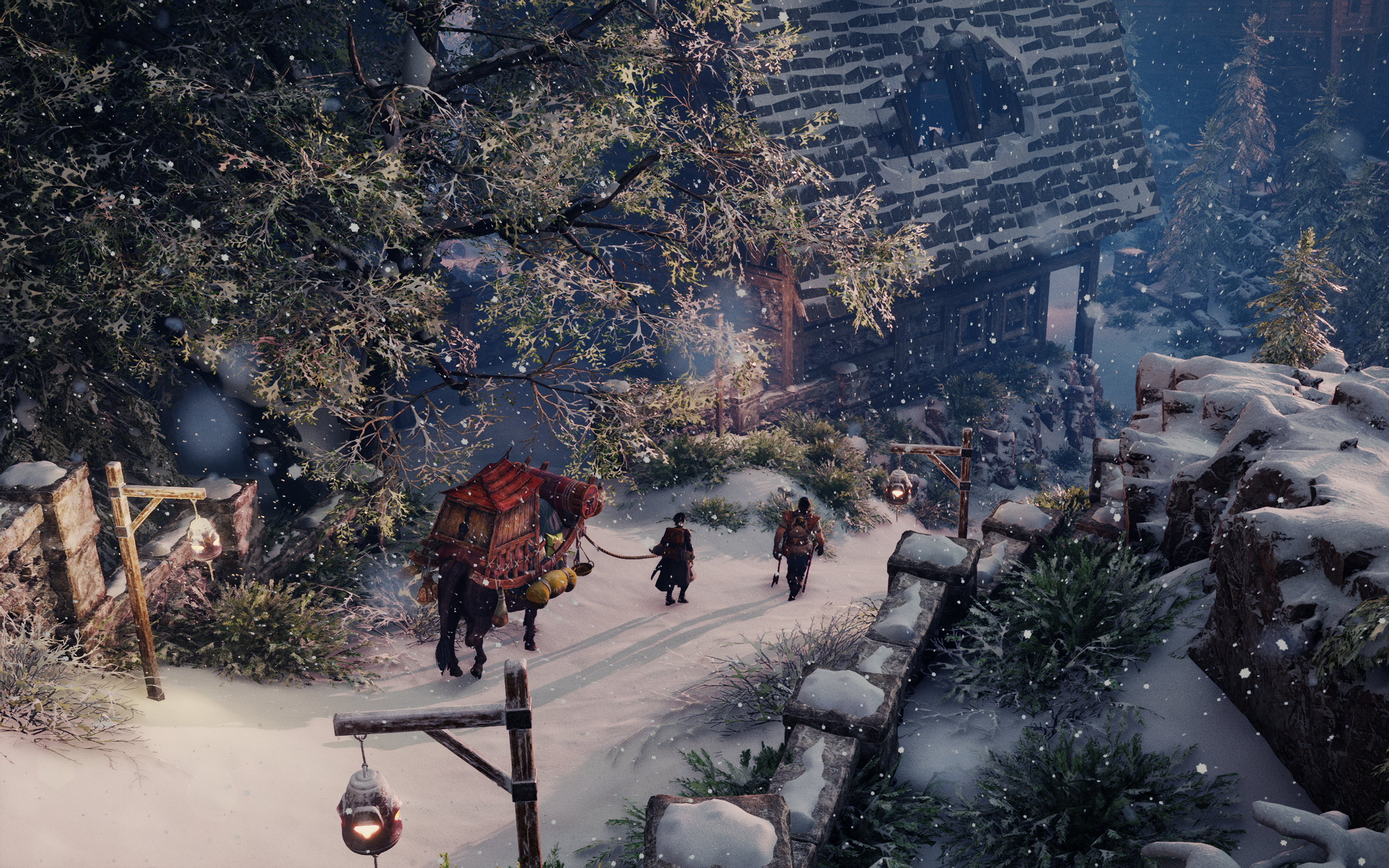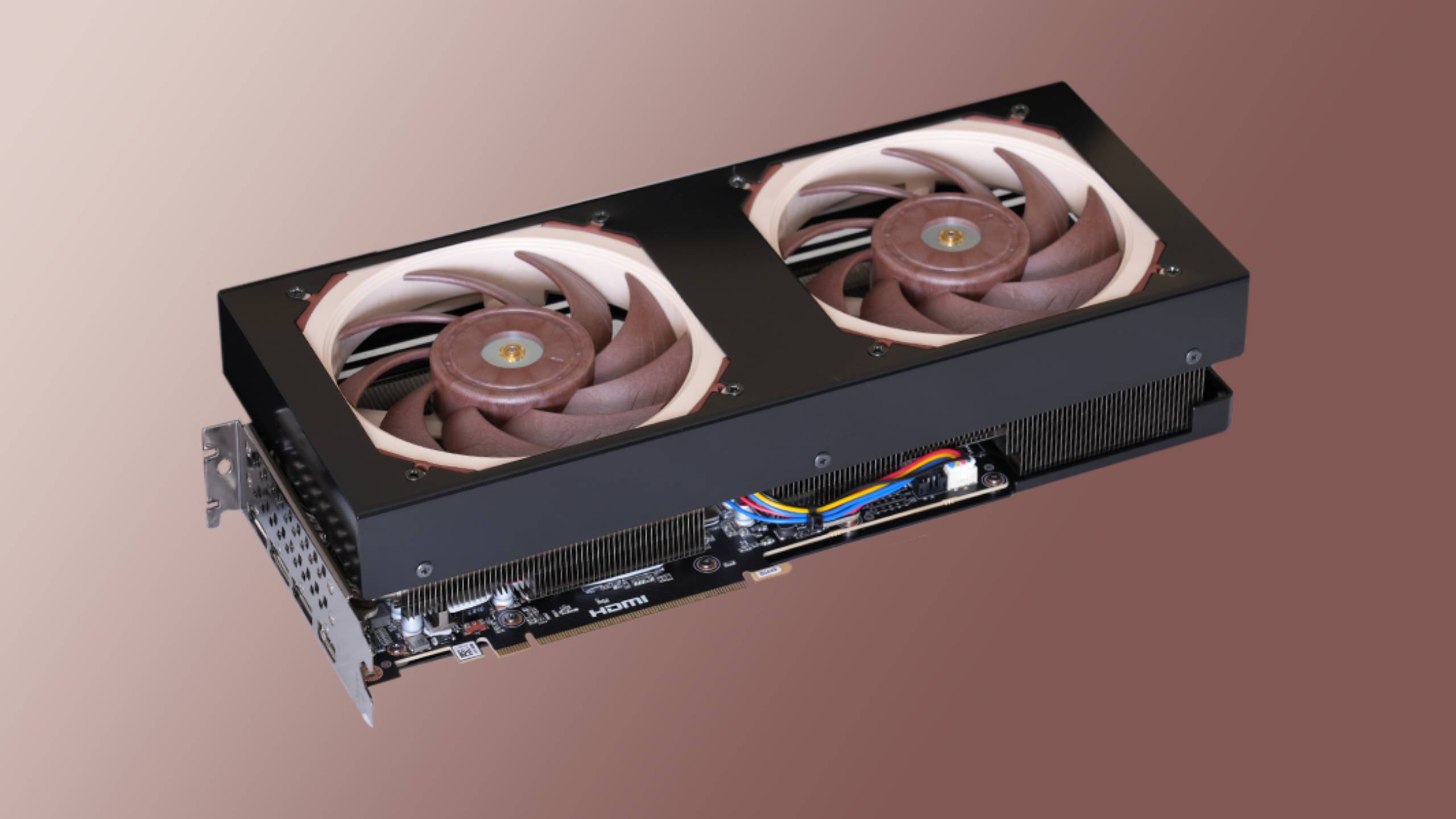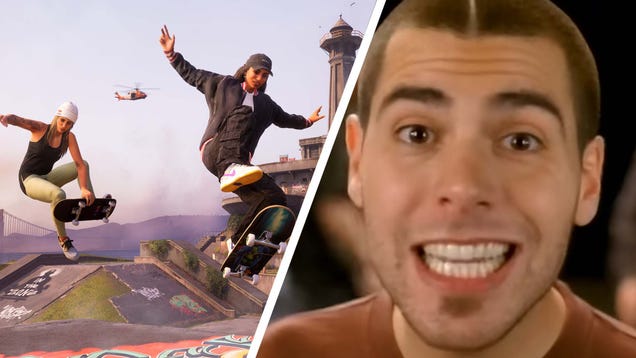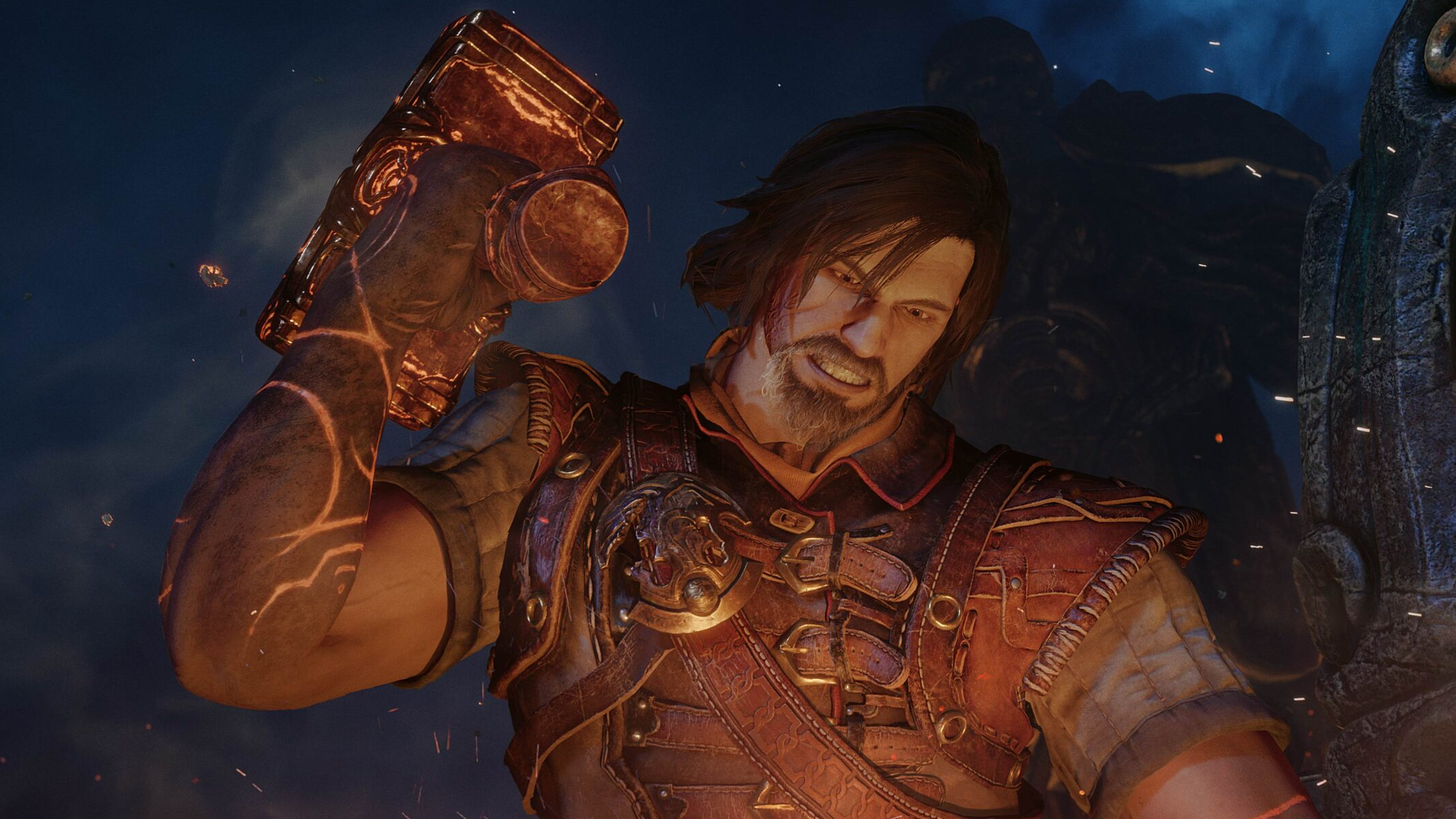
Doesn't quite manage to bring the heat.
Blades of Fire doesn’t do itself any favours pairing Aran, its rugged action hero with godlike powers, a tragic past, and a broken heart, up with a much younger sidekick he insists on calling “boy” and “kid” far too often—but cracking through the Kratos of it all reveals a game that’s trying to leave a more exploration-heavy mark on the cinematic action genre. These are places to be savoured, not slaughtered.
What is it? Another action game starring a buff gruff sad man.
Release date May 22, 2025
Expect to pay £50/$60
Developer MercurySteam
Publisher 505 Games
Reviewed on Intel i9-13900HX, RTX 4090, 32GB RAM
Link Official site
The game truly believes that taking the time to explore its rustic fantasy locales, poking around sandy ruins and enormous crumbling castles instead of rushing from one waypoint to the next, is the heart of the experience. So much so that the game defaults to the hardest difficulty setting, the only one that doesn’t allow me to bring up a convenient “go here next” map marker whenever I’m feeling a bit lost.
And for a short while, it’s magical.
There’s always some out of reach place I can’t help but wonder how to get to close by, and every small deviation off the beaten path seems to hold some convenient shortcut or permanent stat boost. Everywhere I go looks gorgeous, whether covered in snow, sand, or blood, and I did enjoy entering new areas just to see what gorgeous vista I was going to be treated to next.
Actually trying to progress through these areas is another matter. The first dozen or so hours contain not one but two hours-long “drag the NPC around if you want to get anything done” gimmicks, one of which revolves around a crying child. Pushing further on only leads me to an endless parade of increasingly frustrating and flimsy roadblocks, the game making me stand right in front of the one thing/gate I needed to activate/unlock to move on… just so it can explain why it [in]conveniently isn’t working right now. Too often I was sent off to gather several key items split across multiple unrelated zones first, or had to retrieve something I used once in a completely different location, hours ago, for the sake of a single barrier. Not even free fast travel, available at any of the sensibly-placed rest/repair/forging anvils scattered around, was enough to soften the repeated hammer blows to the game’s pacing.
The “boy” that sticks by Aran’s side through all this is Adso, a young scholar who takes notes and draws illustrations in his journal as I play. When complete, these notes are a nice mix of interesting lore and genuinely useful battle information, with the two combining nicely. I can learn why a boss has a particular attack, as well as what I should do about it.
Unfortunately Aran and Adso struggle to go two minutes without engaging in some sarcastic bants. In cutscenes this can lead to some funny moments, but I really could have done without hearing the same small selection of quips whenever there’s a button to push or, at its most grating points, a ladder or rope to climb. I can send him back to camp whenever I want some peace and quiet, but that just leaves me with a half-empty journal (Adso can’t record things he hasn’t seen, after all) and sometimes without the one person I need to activate a lever on the opposite wall.
At least he’s invincible, so I’m free to focus on mowing down the vast hordes of twisted abominations standing between Aran and the end of his quest.
To shreds
My controller’s face buttons match the direction of Aran’s swings—hitting the Y button at the top unleashes an overhead smash, while tapping B results in a slash from his right. It makes sense immediately and allows me to create some smooth combos on the fly, switching between piercing pokes and broad sweeps with ease. Attacks with heavy weapons feel wonderfully weighty, while smaller swords, axes, and daggers are light and agile in Aran’s coal-stained hands.
These directional attacks aren’t just for show either. Locking on to an enemy brings up a colour-coded outline, showing how vulnerable each of the four major areas of their body are to Aran’s currently equipped weapon—and where an attack will be so ineffective it’ll harmlessly bounce off.
In theory this brings some tactics into my fights—I’m supposed to aim for the green bits, treat the orange as second best, and actively avoid the red—but by and large enemies are just one uniform colour, and if that colour is anything other than green I just switch to a more effective weapon Aran has assigned to a quick slot (he can have up to four at a time, with even more readily available via the equipment screen) and carry on as normal.
This colour coding is tied to my weapon’s stats and damage type, instead of anything my opponent’s wearing, divorcing what I’m seeing from what I have to do. A guy completely sealed in plate mail? Green. Weird skinny thing with obvious exposed areas? Maybe some orange or red in there. For all this tinted targeting, my tactical opportunities are limited to hurting them a little or a lot (or not at all). I can’t make an effort to hack off a powerful enemy’s sword arm, leaving them weaponless, or force a quick monster to stumble with a series of low blows.
It doesn’t help that there’s little practical difference between most common enemy types; they’re all just fodder for the end of my blades. One dagger guy is very much like any other dagger guy, no matter how they’re dressed up or what difficulty setting I’m playing on. And those that do require me to change up my techniques are, a bit too often, just That Guy From Before: On Fire Edition or some other obvious remix. By and large, the battle tactics I was using 30 minutes in were unchanged 30+ hours later—as were the attacks being used against me.
The rare boss battles were thankfully much better, offering an enjoyable combination of genuine challenge, cinematic climaxes, and truly unique phases and mechanics I had to learn and then perfect. Well-timed dodges, blocks, and parries are essential if I want to survive the lightning blasts, blades, and fiery magic sent my way. I’m encouraged to pay close attention to my own positioning and closely read my opponent’s behaviour, while dealing with situations I have never experienced before or since.
Hammer it out
This naturally led to more than a few lost or broken weapons along the way, which need to either be retrieved and repaired or abandoned and then forged anew (materials willing). I expected to hate everything about this system. I am so over watching out for durability and breakages and wasting my time crafting things out of spare parts. So I was surprised to see just how quickly Blades of Fire won me over.
Unless I deliberately go swinging a less sturdy weapon at the nearest rock, durability is something to generally keep in mind rather than constantly fuss over, and I never, ever, needed to carry a small army’s worth of identical swords with me. Instead I ended up with a favourite undead-bopping polearm, as well as a sword I was sad to have to recycle for parts after I’d used it until it couldn’t be repaired any more, and a pair of hand axes I cared for like they were my children.
The in-depth forging process does a fantastic job of making whatever I create truly feel like mine from the moment Aran stands in front of the design slate with chalk in hand, allowing me to select everything from the weapon’s handle type to the end point shape and the exact materials used for each major part too; every decision altering its speed, reach, balance, and more. I’m then made to hand-hammer the molten metal into its final shape, “feeding” the thinner areas from the “lumps” by carefully pushing them along the line, the angle and strength of my blows deciding how many one-click repairs the final weapon gets.
It’s even possible to auto-forge something to the highest quality already reached for that weapon type, greatly speeding up the process when forging an upgrade or just creating a handy spare. There were times I chose not to even when I could, just because it was so satisfying to do it all myself.
So sometimes it sparkles like a diamond, but I still came away from my time with the game thinking it would have been twice as good if they’d dared to make it half as long.
The lack of enemy variety and reactivity wouldn’t have been so obvious if they’d shaved a good 10 hours off the nigh 40-hour run time. A major plot twist made me groan in frustration, game-long goalposts suddenly moved to shift the focus onto a character who before that point had been given about as much depth and screen time as the farting ogre with a comedy moustache I’d suffered through earlier. The odd bout of fetch-questing can be a great excuse to revisit an old area with a fresh pair of eyes, but too often I’m made to act like a bored fantasy courier, sometimes for people who can fly, rather than a brave hero.
Even so, I like it. It looks beautiful, smashing skeletons to bits with a giant axe feels fantastic, and Aran and Adso are great characters when they’re not slipping into some “God of War via Marvel” routine again. Blades of Fire may not be polished steel, but there is a shining nugget of something good in here; it’s just a shame it’s often hidden under layers of patience-testing flaws.
